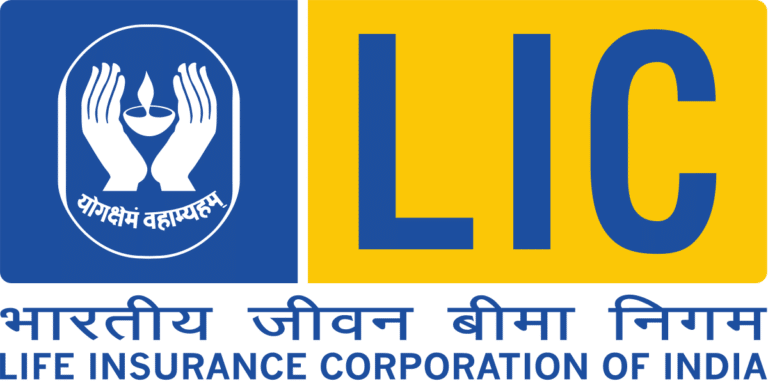7 Types of Life Insurance Plans in India – Key Features, Differences, Benefits and Drawbacks
Life insurance is an important investment for anyone who wants to secure their loved ones financially in the event of an unforeseen event. There are several types of life insurance plans in India, each with its own unique features, benefits, and drawbacks. Choosing the right type of life insurance policy is crucial to ensure that your family is protected and financially secure in the long run. In this article, we will explore the different types of life insurance policies available in India, including term life insurance, whole life insurance, endowment plans, money-back policies, and unit-linked insurance plans (ULIPs).

Page Contents
What are the Types of Life Insurance Plans in India?
There are broadly 7 types of Life Insurance Plans in India and they are:
| Policy Type | Key Features |
|---|---|
| Endowment Plan | Combines insurance and savings; offers a lump sum payout on maturity or in case of death |
| Term Plan | Provides pure risk cover with no survival benefits; offers a lump sum payout to the nominee in case of death |
| Unit-linked insurance plan (ULIP) | Combines insurance and investment; offers market-linked returns on investment and a life cover |
| Money-Back Plan | Provides periodic returns with an insurance cover; offers a percentage of the sum assured at regular intervals |
| Whole Life Insurance | Provides life coverage for the entire life of the policyholder; offers a lump sum payout to the nominee in case of death |
| Child’s Plan | Helps fulfil a child’s life goals like education and marriage; offers a life cover and maturity benefits |
| Retirement Plan | Helps plan for retirement and provides a regular income post-retirement; offers a life cover and maturity benefits |
Note: The features and benefits of each policy type can vary from one insurer to another, so it’s important to do your own research and consult a financial advisor before making any investment decisions.
Endowment Plans
Endowment plans are a unique type of life insurance plan that offer a combination of insurance and savings benefits. These policies provide a guaranteed payout at the end of the policy tenure or in the event of the policyholder’s demise, making them a popular choice among investors who want to secure their family’s financial future.
One of the unique features of an endowment plan is that it provides a lump sum payout on maturity, which can be used to meet long-term financial goals such as buying a house, funding a child’s education, or planning for retirement. Additionally, endowment plans offer a life cover throughout the policy tenure, ensuring that the policyholder’s family is financially secure in the event of their untimely demise.
Another benefit of an endowment plan is that it offers tax benefits under Section 80C and Section 10(10D) of the Income Tax Act, making it a popular choice among investors who want to save on taxes while building their savings.
It’s worth noting that the premiums for endowment plans are generally higher than those for term policies, as the policy offers a combination of insurance and savings benefits. However, the policyholder can still benefit from a guaranteed return on investment in the form of a lump sum payout on maturity.
Overall, endowment plans can be a great option for those who want to secure their family’s financial future while also building their savings. However, as with any investment decision, it’s important to do your own research and consult a financial advisor before making any investment decisions.
Term Life Insurance
Term life insurance is a type of life insurance plan that provides pure risk cover, with no savings or investment benefits. These policies offer a lump sum payout to the nominee in the event of the policyholder’s demise, making them a popular choice among investors who want to secure their family’s financial future in the event of an unforeseen event.
One of the unique features of term life insurance is that it offers a high coverage amount at a relatively low premium, making it an affordable option for investors who want to maximize their life coverage while keeping their costs low. Additionally, term life insurance policies can be customized to meet the policyholder’s individual needs, such as the policy tenure, the coverage amount, and the premium payment frequency.
Another benefit of term life insurance is that it provides a pure risk cover, with no savings or investment benefits. This means that the policyholder’s premiums are solely used to provide life coverage, ensuring that their family is financially secure in the event of their untimely demise.
It’s worth noting that term life insurance policies generally do not offer any maturity benefits, as the policy only provides coverage in the event of the policyholder’s demise. Additionally, the premiums for term life insurance policies may increase with age, as the risk of health issues and mortality increases.
Overall, term life insurance can be a great option for investors who want to secure their family’s financial future in the event of an unforeseen event, without the added costs of savings or investment benefits. However, as with any investment decision, it’s important to do your own research and consult a financial advisor before making any investment decisions.
Out of all the different types of Life Insurance Plans in India, The Term life plan is the most popular insurance in India.
The best way to find out which term insurance plan is good for you is simply logging into the portal like https://www.policybazaar.com and checking out which policy suits you the most.
Unit Linked Plans (ULIPs)
Unit-Linked Insurance Plans (ULIPs) are a unique type of life insurance policy that combines insurance and investment. ULIPs offer a range of benefits, including flexibility, transparency, and the potential for high returns on investment.
One of the unique features of a ULIP is that it provides the policyholder with the opportunity to invest in a variety of market-linked funds, such as equity, debt, or balanced funds. This allows the policyholder to build a well-diversified investment portfolio that can potentially provide higher returns than traditional insurance policies.
Additionally, ULIPs offer flexibility in terms of premium payments, as the policyholder can choose to pay premiums on a monthly, quarterly, half-yearly, or annual basis. ULIPs also offer transparency, as the policyholder can track the performance of their investment through regular updates on the fund’s NAV (Net Asset Value).
Another benefit of a ULIP is that it offers tax benefits under Section 80C of the Income Tax Act, making it a popular choice among investors who want to save on taxes while building their investment portfolio.
However, it’s important to note that ULIPs may come with higher costs compared to traditional life insurance policies, as they offer a combination of insurance and investment benefits. Additionally, the returns on investment are subject to market fluctuations, which can impact the overall returns on the policy.
Compared to all different types of Life Insurance Plans in India, ULIPS are popular amongst people who look to club insurance with investment.
ULIPs offer a unique combination of insurance and investment benefits, making them a popular choice among investors who want to build a diversified investment portfolio while securing their family’s financial future. However, as with any investment decision, it’s important to do your own research and consult a financial advisor before making any investment decisions.
Money-Back Life Insurance
Money-back life insurance is a unique type of life insurance plan in India that provides periodic returns along with insurance coverage. This policy offers a percentage of the sum assured at regular intervals, which can be a great way to meet short-term financial goals. For example, if you have a child’s education fund that needs to be paid every few years, a money-back policy can help provide the necessary funds.
One of the unique features of a money-back policy is that it provides a life cover throughout the policy tenure, ensuring that your family is financially secure in the event of your untimely demise. Additionally, the policyholder is eligible for bonuses declared by the insurance company, which can further enhance the overall return on investment.
Another benefit of a money-back policy is that it offers the liquidity, as the policyholder can choose to surrender the policy and receive the accumulated amount at any time during the policy tenure. This can be particularly helpful in times of financial need or emergency.
It’s worth noting that the premiums for money-back policies are generally higher than those for term policies, as the policy offers a combination of insurance and savings benefits. However, the policyholder can still benefit from a guaranteed return on investment in the form of periodic payouts, making it a popular choice among investors who want to balance their financial goals with their insurance needs.
Moneyback plans are popular compared to other types of Life Insurance Plans in India amongst people who look for regular funds out of their insurance investments.
Whole Life Insurance
Whole life insurance is a type of life insurance plan in India that provides life coverage for the entire life of the policyholder. These policies offer a guaranteed payout to the nominee in the event of the policyholder’s demise, making them a popular choice among investors who want to ensure their family’s financial security in the long run.
One of the unique features of whole life insurance is that it provides life coverage for the entire life of the policyholder, with no fixed maturity date. This means that the policyholder can continue to enjoy life coverage even in their old age, when they may be more vulnerable to health issues.
Another benefit of whole life insurance is that it offers a guaranteed payout to the nominee in the event of the policyholder’s demise, regardless of when it occurs. Additionally, some whole life insurance policies may offer bonuses or dividends, which can enhance the overall return on investment.
It’s worth noting that the premiums for whole life insurance policies are generally higher than those for term policies, as the policy offers life coverage for the entire life of the policyholder. However, the policyholder can still benefit from a guaranteed return on investment in the form of a lump sum payout to the nominee in the event of their demise.
Child Plan
A child plan is a unique type of life insurance plan in India that is designed to help parents save for their child’s future needs, such as education, marriage, or other expenses. These policies offer a combination of insurance and savings benefits, ensuring that the policyholder’s child is financially secure in the long run.
One of the unique features of a child plan is that it provides a guaranteed payout on maturity, which can be used to meet the child’s future financial goals. Additionally, child plans offer a life cover throughout the policy tenure, ensuring that the child is financially secure in the event of the policyholder’s demise.
Another benefit of a child plan is that it offers flexibility in terms of premium payments, as the policyholder can choose to pay premiums on a monthly, quarterly, half-yearly, or annual basis. These policies can also be customized to meet the policyholder’s individual needs, such as the policy tenure, the coverage amount, and the premium payment frequency.
It’s worth noting that the premiums for child plans are generally higher than those for term policies, as the policy offers a combination of insurance and savings benefits. However, the policyholder can still benefit from a guaranteed return on investment in the form of a lump sum payout on maturity.
Retirement Plan
A retirement plan is a unique plan compared to the different types of life insurance plans in India that is designed to help individuals plan for their retirement and ensure a regular income post-retirement. These policies offer a combination of insurance and savings benefits, ensuring that the policyholder is financially secure in the long run.
One of the unique features of a retirement plan is that it provides a guaranteed payout on maturity, which can be used to meet the policyholder’s retirement needs. Additionally, retirement plans offer a life cover throughout the policy tenure, ensuring that the policyholder’s family is financially secure in the event of their demise.
Another benefit of a retirement plan is that it offers flexibility in terms of premium payments, as the policyholder can choose to pay premiums on a monthly, quarterly, half-yearly, or annual basis. These policies can also be customized to meet the policyholder’s individual needs, such as the policy tenure, the coverage amount, and the premium payment frequency.
It’s worth noting that the premiums for retirement plans are generally higher than those for term policies, as the policy offers a combination of insurance and savings benefits. However, the policyholder can still benefit from a guaranteed return on investment in the form of a lump sum payout on maturity, which can be used to ensure a regular income post-retirement.
Important Factors to Consider before Selecting Life Insurance Plan in India
Selecting the right life insurance plan in India can be a crucial decision that requires careful consideration of various factors. Here are some important factors to consider before choosing a life insurance plan:
- Coverage amount: The coverage amount of the policy should be sufficient to meet your family’s financial needs in the event of your untimely demise. It’s important to consider factors such as your current income, expenses, and future financial goals before deciding on the coverage amount.
- Policy tenure: The policy tenure should be long enough to ensure that your family is financially secure in the long run. It’s important to consider factors such as your age, retirement age, and financial goals before deciding on the policy tenure.
- Premium payment frequency: The premium payment frequency should be comfortable for you, based on your financial situation. It’s important to consider factors such as your income, expenses, and cash flow before deciding on the premium payment frequency.
- Premium amount: The premium amount should be affordable for you, based on your financial situation. It’s important to consider factors such as your income, expenses, and savings before deciding on the premium amount.
- Policy features: It’s important to consider the features of the policy, such as the type of policy, the benefits offered, and the flexibility of the policy. It’s important to choose a policy that meets your individual needs and preferences.
- Claim settlement ratio: The claim settlement ratio of the insurance company should be considered before choosing a life insurance plan. A high claim settlement ratio indicates that the insurance company has a good track record of settling claims in a timely and efficient manner.
- Riders: Riders are additional benefits that can be added to the policy for an additional premium. It’s important to consider the riders offered by the insurance company and choose those that meet your individual needs.
- The reputation of the insurance company: The reputation of the insurance company should be considered before choosing a life insurance plan. It’s important to choose an insurance company with a good reputation for customer service and claims settlement.
Final Thoughts on Types of Life Insurance Plans in India
In conclusion, choosing the right plan from all the available types of life insurance plans in India is a crucial decision that requires careful consideration of your individual needs and preferences. As someone who has personally explored the different types of life insurance plans available in India, I can attest that each policy type has its own unique features and benefits.
Whether you’re looking for a pure risk cover with a term plan or a combination of insurance and investment with a ULIP, there is a policy type that can meet your specific requirements. Other options like endowment plans, money-back policies, child’s plans, and retirement plans can also provide a combination of insurance and savings to help secure your financial future.
In my opinion, it’s important to do your own research, evaluate your options, and consult a financial advisor before making any investment decisions. By taking the time to understand the different types of life insurance plans available, you can make a more informed decision and choose the policy that best meets your needs. Remember, life insurance is an investment in your family’s future, and choosing the right policy can provide peace of mind and financial security in the long run. So, take your time, evaluate your options, and choose wisely.
FAQs on Types of Life Insurance Plans in India
What is life insurance?
Life insurance is a type of insurance policy that provides financial protection to the policyholder’s family in the event of their demise. The policy provides a lump sum payout to the nominee, ensuring that they are financially secure in the long run.
What are the different types of life insurance plans in India?
The different types of life insurance plans in India include term plans, endowment plans, unit-linked insurance plans (ULIPs), money-back plans, whole life insurance, child plans, and retirement plans.
What is a term plan?
A term plan is a type of life insurance policy that provides pure risk cover, with no savings or investment benefits. These policies offer a lump sum payout to the nominee in the event of the policyholder’s demise.
What is an endowment plan?
An endowment plan is a type of life insurance policy that offers a combination of insurance and savings benefits. These policies provide a guaranteed payout at the end of the policy tenure or in the event of the policyholder’s demise.
What is a ULIP?
A ULIP is a type of life insurance policy that combines insurance and investment. These policies offer a range of benefits, including flexibility, transparency, and the potential for high returns on investment.
What is a money-back plan?
A money-back plan is a type of life insurance policy that provides periodic returns with an insurance cover. These policies offer a percentage of the sum assured at regular intervals, ensuring that the policyholder’s short-term financial goals are met.
What is whole life insurance?
Whole life insurance is a type of life insurance policy that provides life coverage for the entire life of the policyholder. These policies offer a guaranteed payout to the nominee in the event of the policyholder’s demise.
What is a child plan?
A child plan is a type of life insurance policy that is designed to help parents save for their child’s future needs, such as education, marriage, or other expenses. These policies offer a combination of insurance and savings benefits.
What is a retirement plan?
A retirement plan is a type of life insurance policy that is designed to help individuals plan for their retirement and ensure a regular income post-retirement. These policies offer a combination of insurance and savings benefits.




